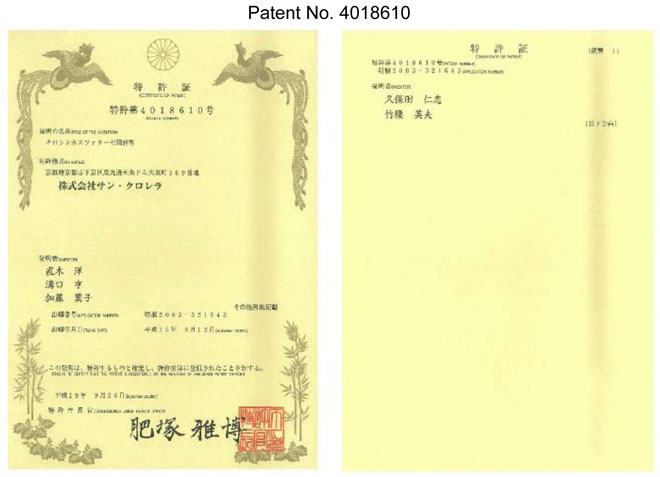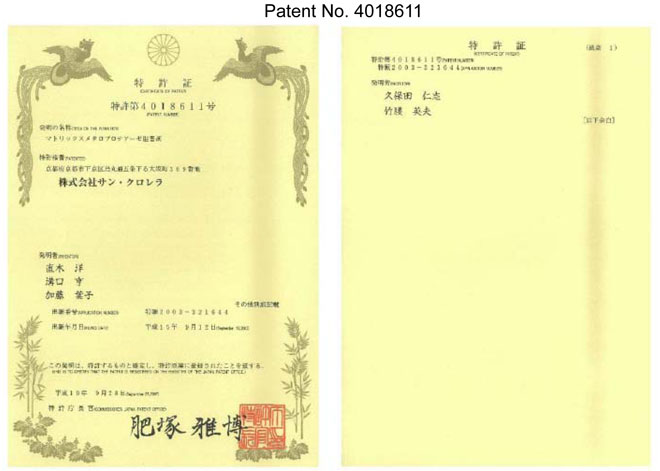- TOP
- List of reports
- Patents obtained from the results of Chlorella research : September 2007
Patents obtained from the results of Chlorella research : September 2007
【Scientific information】
Research and Development Department, Sun Chlorella Corporation
Patents obtained from the results of Chlorella research : September 2007
Generally speaking, diseases occur as the result of unfavorable signal
transduction to the living organisms. If this could be inhibited, it is possible to
cure the diseases. Enzymes and receptors are the two substances playing
important roles in the signal transduction. A great number of research data in
connection between diseases and the above substances has previously been
reported.
Chlorella, on the other hand, is recognized to have numerous
pharmacological effects. Examining its effects on enzymes and receptors
allowed us to determine their mechanisms of action. The results of our research
on this subject have already been published as a scientific paper (featured in Vol. 7,
No. 2 of the Journal of Medicinal Food, 2004). We hereby announce that patents
have recently been granted for the following two effects.
1. Tyrosine phosphatase inhibitor
Several types of this enzyme are known, and are extensively involved in various immune reactions. Inhibiting this enzyme is expected to be effective against autoimmune diseases, breast cancer, ovarian cancer, and other diseases.

2. Matrix metalloproteinase (MMP) inhibitor
Several types of this enzyme are known, and work to weaken the adhesive bonding between two cells. Inhibiting this enzyme is expected to be effective against invasion of cancer cells, rheumatic arthritis, autoimmune diseases, periodontal diseases, tissue ulcers, and other conditions.

Please see the following for explanations on the research paper:
"Effects of Chlorella on Activities of Protein Tyrosine Phosphatases, Matrix
Metalloproteinases, Caspases, Cytokine Release, B and T Cell Proliferations, and
Phorbol Ester Receptor Binding"





